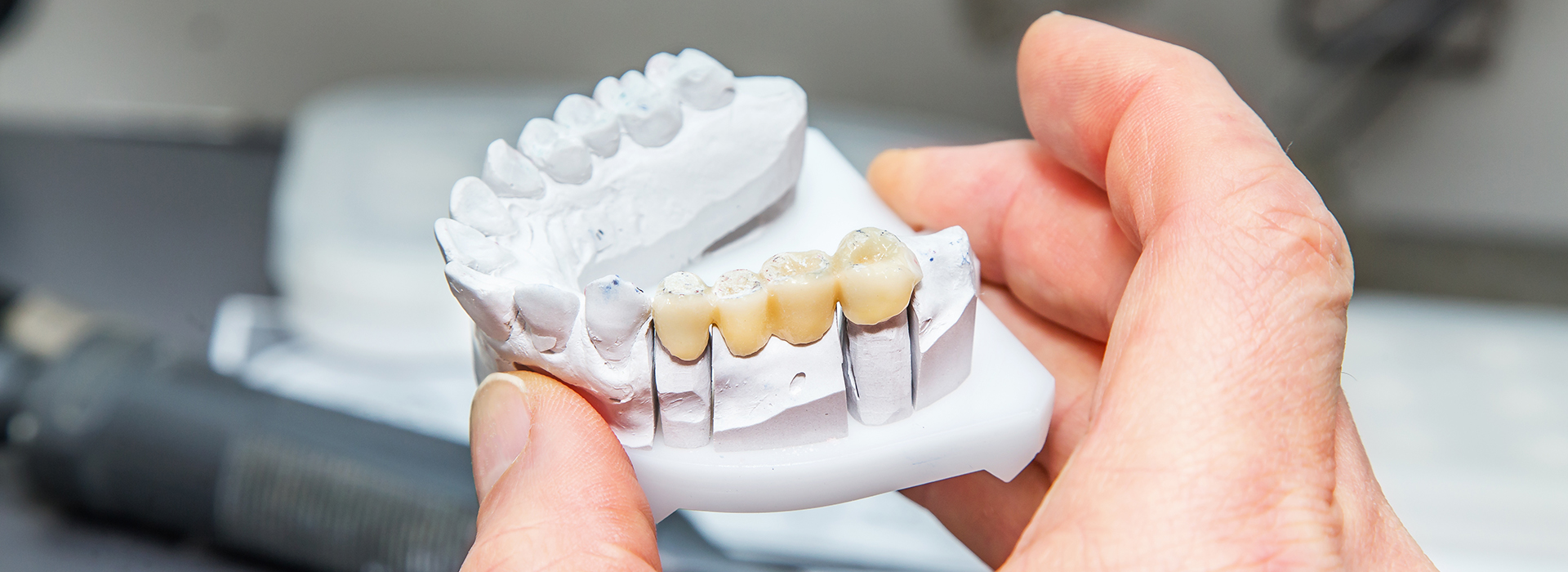
At Seals Family Dentistry, we believe a missing tooth should never dictate how you eat, speak, or feel about your smile. Dental bridges are a reliable restorative option that can rebuild appearance and function without reinventing the wheel — and our team focuses on solutions that fit each patient's health, goals, and lifestyle.
Losing a tooth creates immediate cosmetic concerns, but the consequences extend well beyond appearance. When a tooth is missing, nearby teeth begin to drift toward the gap. Over time this shift can change your bite, create new areas that trap food, and make routine cleaning more difficult — all of which raise the risk of decay and gum disease.
The opposing tooth can also respond to the vacancy by erupting into the open space, a process called extrusion. That change in position disrupts how teeth meet during chewing and can lead to uneven wear, sensitivity, and jaw discomfort. For many patients, these functional problems create a cycle of additional dental needs if they are not addressed in time.
Beyond the teeth themselves, the jawbone reacts to the loss of a root. Without the stimulation provided by a natural tooth, bone gradually resorbs, which can alter facial contours and compromise options for future restorations. Replacing missing teeth promptly helps preserve both oral health and long-term treatment choices.
Today’s dentistry offers several dependable ways to replace missing teeth, and a well-crafted bridge remains one of the most practical choices for many patients. Bridges restore chewing efficiency and speech, prevent adjacent teeth from drifting, and recreate a natural-looking smile with materials that closely mimic tooth enamel.
Choosing the right approach depends on the number of missing teeth, the health of surrounding teeth and gums, and your personal preferences. Options include traditional tooth-supported bridges, implant-retained bridges, and removable partial dentures. Each has distinct benefits and clinical considerations, so a thorough evaluation helps determine which option will deliver the best long-term outcome.
Regardless of the chosen method, the goal is consistent: replace lost tooth structure in a way that restores comfortable function, supports oral health, and looks proportionate within your smile. Our team emphasizes predictable techniques and contemporary materials that improve durability and aesthetics.
A traditional fixed bridge replaces one or more teeth by anchoring artificial teeth (pontics) to crowns on the adjacent natural teeth. This design is time-tested and provides a stable, non-removable solution. It is often recommended when the supporting teeth are healthy enough to receive crowns and can offer a strong, long-term restoration.
Implant-supported bridges use dental implants — titanium posts placed into the jawbone — as anchors instead of natural teeth. Because they behave much like tooth roots, implants preserve bone and eliminate the need to alter neighboring teeth. Implant solutions are especially useful when multiple adjacent teeth are missing or when the surrounding teeth are not ideal candidates for crown support.
Other designs, such as cantilever or resin-bonded (Maryland) bridges, serve niche situations where only one side of the gap can accept support or when minimal tooth preparation is desired. Each style addresses different anatomical and restorative needs, so the choice is always made with an eye toward long-term health and patient comfort.
Successful bridge treatment begins long before impressions are taken. A comprehensive exam evaluates gum health, tooth stability, bite relationships, and the quality of the jawbone. If active gum disease or decay is present, those issues are treated first to ensure the foundation for the bridge is stable and healthy.
If the chosen plan involves implant support, imaging and 3D scans help determine available bone and the ideal implant position. In some cases, bone grafting or other preparatory procedures may be recommended to create a solid base for implants. For traditional bridges, the condition of the adjacent teeth is crucial; they must be strong enough to support crowns without compromising long-term prognosis.
We also discuss personal goals, aesthetic preferences, and practical considerations — such as expected maintenance and how the restoration will fit into your daily routine. Clear communication and shared decision-making help ensure the final result aligns with both clinical needs and your expectations.
For a traditional bridge, treatment usually involves tooth preparation, impressions, and a temporary restoration while the final bridge is fabricated. The prepared teeth are shaped to receive crowns, an impression captures the relationship of your teeth and bite, and a temporary bridge protects the area between appointments. Once the permanent piece is ready, fit, color, and bite are verified before it is securely cemented in place.
Implant-supported bridges begin with implant placement, a surgical step performed under local anesthesia and, if desired, sedation. After implants are placed, a healing period is required for the bone to integrate with the implants. This process is monitored closely, and when the implants are stable, the permanent bridge is attached. In many cases a temporary restoration can be used during healing to preserve appearance and function.
Regardless of the technique, some short-term sensitivity or soreness can be expected as tissues adapt to the new restoration. Good oral hygiene is essential to protect the supporting teeth or implants. Special flossing techniques, interdental brushes, or water flossers are often recommended to clean beneath pontics and around abutments. Routine checkups and professional cleanings help detect wear or minor issues early, preserving the integrity of the bridge for years to come.
With the proper clinical planning, high-quality materials, and attentive home care, bridges can deliver reliable function and a natural appearance that helps patients smile, speak, and eat with confidence again.
Seals Family Dentistry is committed to helping patients understand their restorative choices and receive care tailored to their needs. If you’re considering a bridge or want to explore all tooth replacement options, please contact us for more information and to schedule a consultation.

Your new bridge is customized to the exact specifications of your smile. Before cementing to the underlying teeth or affixing it to the supporting implants, the shade, occlusion, and all aspects of its fit get carefully checked. In addition to being designed to blend seamlessly with your smile, it's also made to suit your bite and withstand all manner of oral function. We take great care to make sure your new restoration looks great, fits well, and that your bite feels comfortable.
Replacing missing teeth with a dental bridge is a worthwhile investment in the look, health, and function of your smile. While many dental insurances offer coverage for a dental bridge, and some toward the cost of implants, the benefits and amounts can vary significantly from plan to plan. At the office of Seals Family Dentistry, we understand the financial considerations involved in care and do all we can to help patients begin treatment without any additional stress or delay. In addition to doing our best to optimize your dental benefits, we also offer several payment and financing options. Feel free to contact our office if you have any questions on the cost of care, dental insurances, financing plans, or acceptable forms of payment.
Now that your new permanent crown or bridge is in place, it's essential to maintain good oral hygiene. With proper care, your new restorations will last for years to come. Make sure to brush and floss as instructed. We'll show you how to floss under your dental bridge to keep your new smile clean and bright. Remember to make appointments for your routine checkups and professional cleanings.
The standard answer is that with routine dental visits and good home care, a bridge can last ten to fifteen years, and in many cases, much longer.
At the office of Seals Family Dentistry, we fabricate your bridge from the highest quality dental materials to achieve the most cosmetically pleasing and lifelike results of care. It's also customized to the exact specifications of your smile and designed for optimal aesthetics, strength, and stability. Once fabricated and cemented into place, you'll feel confident sharing your smile, speaking, and eating your favorite foods.
As your trusted partner in care, we analyze every aspect of your smile to develop a treatment plan that provides aesthetically pleasing, healthy, and long-lasting results of care.
For more information on dental bridges, or any services we provide, give us a call today.

Whether you're ready to schedule your first appointment, have a question about our services, or need urgent dental care, we’re just a call or click away. Our friendly team is here to make your experience simple, stress-free, and tailored to your needs.